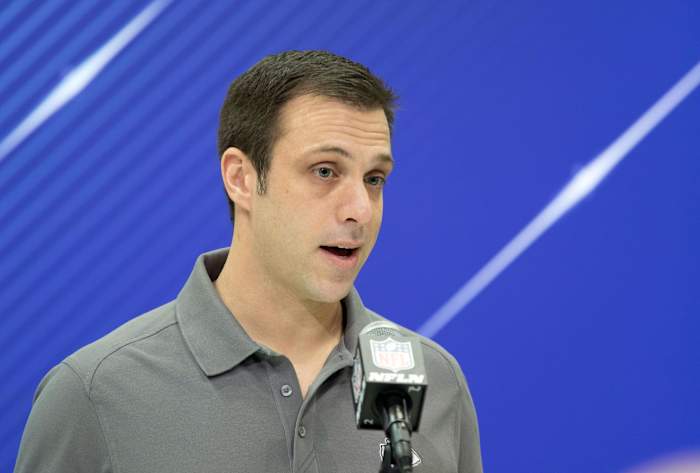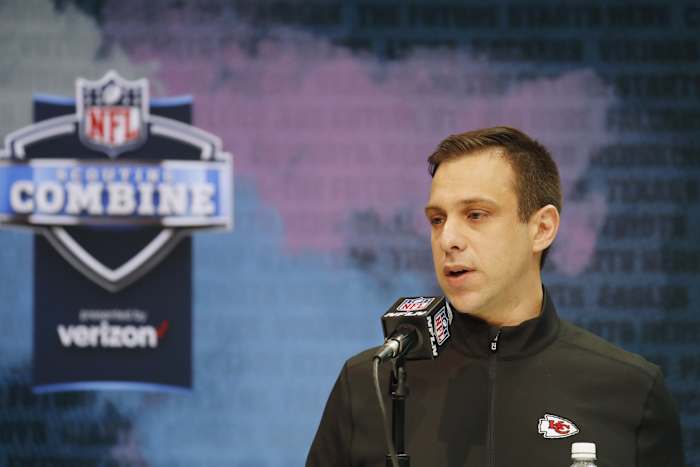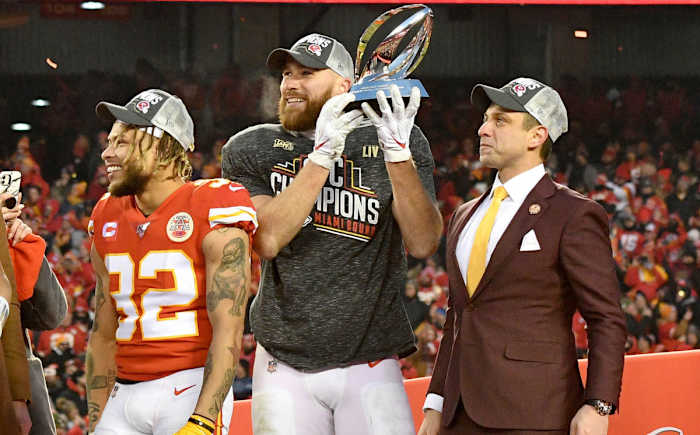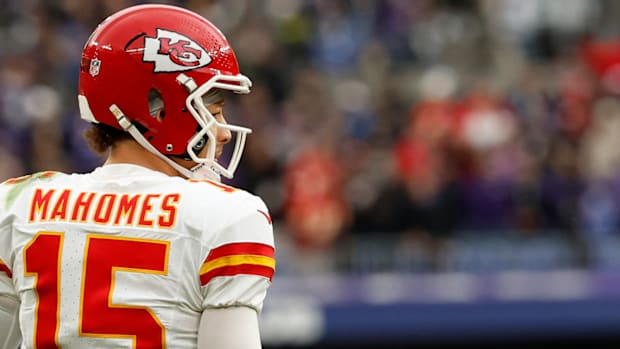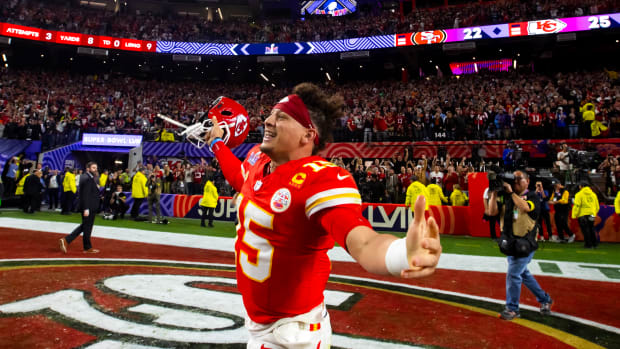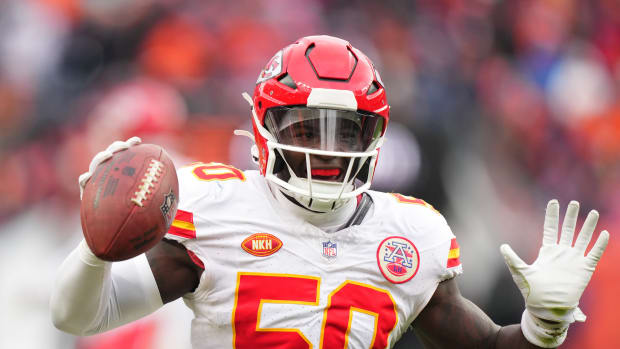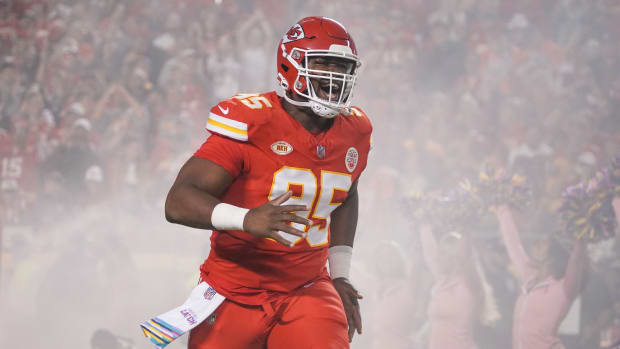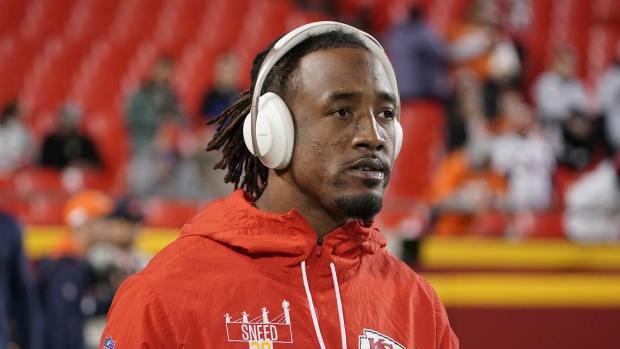The Chiefs Need to Be Precise if They Trade Up in the Draft
Confidence, or arrogance?
When a team trades up in the NFL Draft for a player, they are unintentionally telling the world that they are confident in their evaluation of said player. Not only are they confident enough to make the pick, but they are so confident that they are spending multiple picks to do so!
That confidence, when looking at the draft historically, could be interpreted as more of an air of arrogance.
There has been a cohort of NFL analysts over the last half-decade who have started to drive home the simple fact that the draft is a crapshoot. While teams feel like their scouting and decision-making sorts out the best prospects from the worst, all teams will hit and all teams will miss in reality. In Brett Veach and Kansas City Chiefs terms: For every Creed Humphrey, there is a Breeland Speaks. In this reality of the draft, why lose multiple draft selections in exchange for one?
With the Chiefs holding twelve picks heading into the 2022 NFL Draft, they sit in a spot where trading up seems inevitable. While Veach has not traded up in the first round yet in his stint as Chiefs general manager, he has traded up in other rounds while also trading away first-round picks for players. A trade-up in the first round would complete his aggressive general managing bingo card — but is that the right call for the Chiefs?
When evaluating how the Chiefs should approach this draft, there are important things to consider when it comes to those twelve draft picks.
On the surface, the Chiefs are tied with the most draft picks in the NFL. One thing to consider, though, is that four of those picks are seventh-round ones. The value difference between these seventh-round picks and pick 135, the Chiefs' second of two fourth-round picks, is substantial.
This is not to say the seventh-round picks are useless — they're far from it. However, the expectations for those four seventh-round picks (if Veach keeps them all) should be that only one of them turns into a solid role player. Even then, a 25% hit rate in the seventh round is high historically.
To build on the above, let's explore a scenario where Veach trades up in the first round. Generally, any trade Veach executes will probably send two mid-round assets away. Assuming those picks are something like Nos. 94 and 135, the Chiefs are reduced from eight draft picks in the first four rounds to six. Paired with the one seventh-round pick that hits (possibly), the end result is the Chiefs adding a very normal seven rookies who could amount to something.
This very realistic outcome is the issue with trading up. As the Chiefs currently sit, it seems very realistic the roster could actually use nine rookies to bolster a depleted depth chart. Not only are there positions needing starters — defensive end, cornerback and wide receiver — but the Chiefs also need depth at other positions like defensive tackle, linebacker, and safety.
There is a litany of role players on the Chiefs' roster who are in the last year of their contract — names like Juan Thornhill, JuJu Smith-Schuster, Derrick Nnadi, Mecole Hardman, Blake Bell, Andrew Wylie, Jermaine Carter and Rashad Fenton. While some of these players could come back on one-year contracts, it is also arguable that the Chiefs could improve on them. The Chiefs need both starters and depth players, which means they could use all the chances to acquire them as possible.
One last wrinkle to this draft to consider is that many scouts and draft media believe this rookie class to be extremely deep with quality players. This phenomenon is happing because college seasons were shortened the year before last. This forced some players who had little playing time in 2020 to return to college. It's just another way the draft might benefit teams with multiple mid-round picks.
Considering all of these factors, is trading up really the best way forward? It can be, but in a measured way.
My preferred way that the Chiefs find a trade-up in the first round would be to execute a trade that lets them keep their plethora of mid-round picks. One possibility is to package Nos. 29 and 62 for a pick in the teens. Another way to execute this measured trade-up is to swap Nos. 29, 94 and 135 for a pick in the teens plus perhaps a fifth-round pick. These packages only lose one pick overall, and the Chiefs would keep the three picks they own in the top 50.
Another way to mitigate any losses in a trade-up would be trading up from No. 29, but then turning around and trading down from No. 30. If there is a quarterback at No. 30 that teams are interested in, then this is a very realistic scenario if Veach desires it. That desire, however, is key: Veach has yet to trade down as the Chiefs' general manager.
The cornucopia of draft picks the Chiefs are sitting on, thanks to trading Tyreek Hill, means they can do many things. It is tempting to burn two mid-round picks in a trade-up for Jameson Williams, but the Chiefs need those mid-round lottery tickets. The roster is bleeding talent, a lot of role players could be leaving soon, and the Chiefs need to try and get young talent on the team.
The history of the draft shows a long and storied history of front offices being arrogant and making their jobs harder. Veach can still be aggressive while keeping his job easy. He needs to leverage the pile of draft picks he has accumulated in an efficient way to help lead the Chiefs into a new era.
Do not be arrogant, Veach. Be patient and measured. That is still possible, even if a trade-up scenario comes into play.

